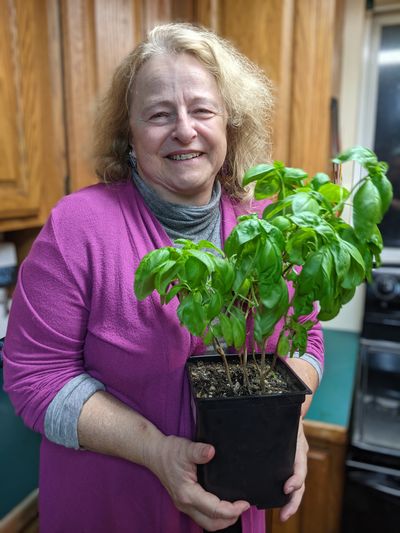Gardening: To grow basil, plant them in sunny and warm spots

Basil is one of the most widely used herbs in kitchens around the world. It is used to make Italian pesto, Thai spicy pork and basil, Taiwanese fried chicken and basil, and Mexican street corn bowls with a lime-basil vinaigrette to name a few of hundreds of recipes.
There are dozens of varieties of basil to choose from. The standards are the Italian or Mediterranean basils like Genovese, Lemon, Cinnamon, Purple Ruffles, Mammoth and Globe. Then there is Thai sweet basil with a spicy, licorice flavor, chocolate, lime, lettuce leaf, African blue basil and Indian holy basil. The latter flavors Indian dishes and is also sacred to Hindus and is said to have medicinal properties.
Sadly, it isn’t easy to find a wide variety of basil plants in our grocery stores either because there isn’t the demand, or that fresh basil is quite perishable. Dried basil loses much of its flavor in the drying process. This means growing your own is the best way to experiment with the many flavors of basil. It is easy to grow if you understand the plant’s needs from the beginning.
Basil needs a lot of heat to do well in the Inland Northwest. Consistent warm temperatures in the 70s, but preferably the 80s and above, and soil temperatures in the 60s. We don’t get those kinds of temperatures until at least mid-June and I suspect this year into late June.
We are predicted to have a colder than normal spring this year. I’ve grown basil in 50-degree temperatures, and it tends to turn yellow and become stunted, a condition it doesn’t recover from. It frosts at even a whiff of 32 degrees. I’ve already seen it for sale on the box store nursery racks, which means if you can’t resist buying it now, put it into a slightly larger pot and set it in a sunny window indoors for a couple of months. I grow my own starts, but I don’t seed them until early May for planting out in late June.
Basil grows best in rich, well-drained soil with a lot of compost. It does very well in raised beds or large pots filled with a good-quality potting mix.
It needs consistent watering and regular fertilizing to promote good leaf production. Use a general-purpose vegetable fertilizer.
It needs at least six to eight hours of direct sun and loves being planted in the warmest corner of the garden.
The plants grow to differing heights depending on the variety. Read the label or seed packet to check on your particular variety.
Once the plants start branching out, pinch out the growing tips on each stem to force the plant to branch further.
When they start sending up flowers, pinch those out to force the plant to continue leaf production. Once the plant begins to flower, the leaf flavor dissipates.
Harvest individual leaves for cooking or the whole plant for making pesto. Blanch the leaves before they go in the freezer for later use.